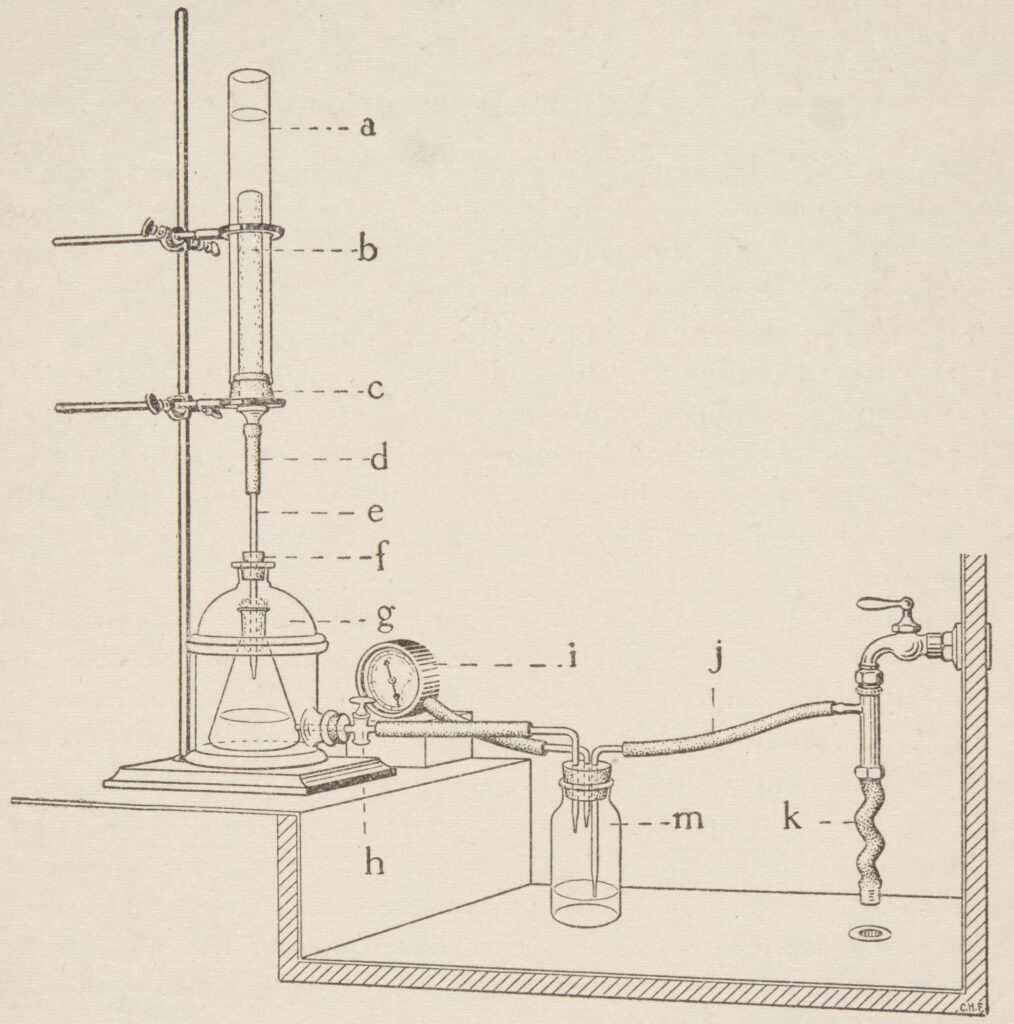1884 | The Pasteur-Chamberland filter
A Pasteur-Chamberland filter is a porcelain water filter invented in 1884 by French microbiologist Charles Edouard Chamberland, an assistant to Louis Pasteur. The filter is not permeable to bacteria, and was initially used to sterilise liquids.
It consists of a permeable unglazed porcelain tube (called a biscuit) containing a ring of enamelled porcelain through which the inflow pipe fits. The core of the porcelain consists of a metal pipe with pores through which water flows out and is collected. Filtration occurs under compressive force.
The filter was used in the late nineteenth century by Russian botanist and biologist Dmitri Ivanovsky to conduct research on an invisible pathogen.
When reproducing Ivanovsky’s experiment a few years later, Martinus Beijerinck discovered the existence of viruses: tiny particles that could multiply, were much smaller than bacteria, and were not stopped by the filter’s microscopic pores.
